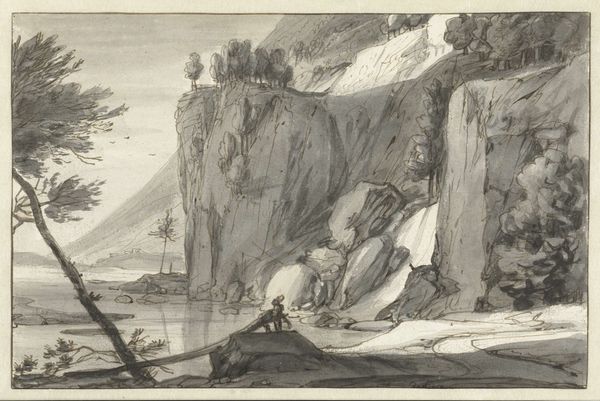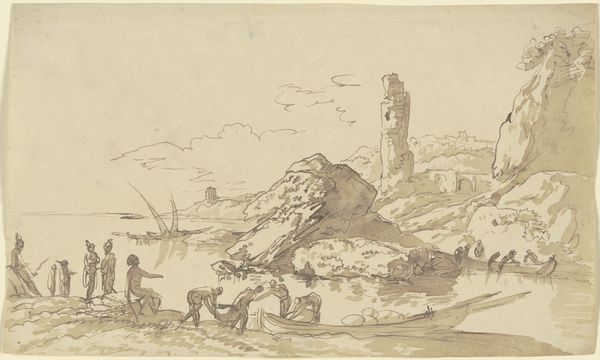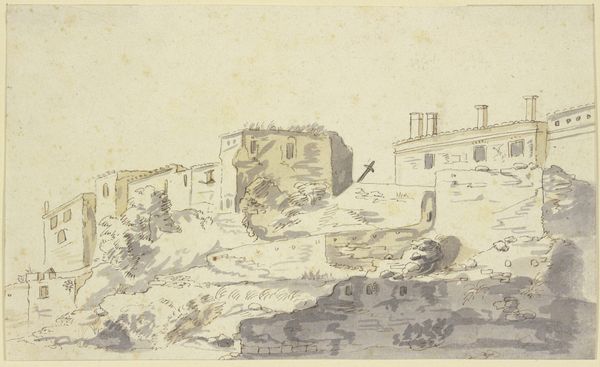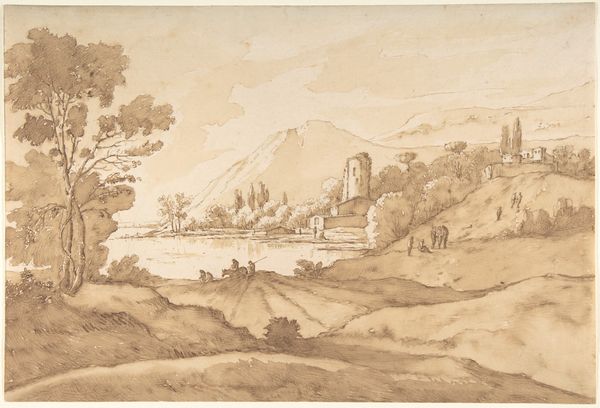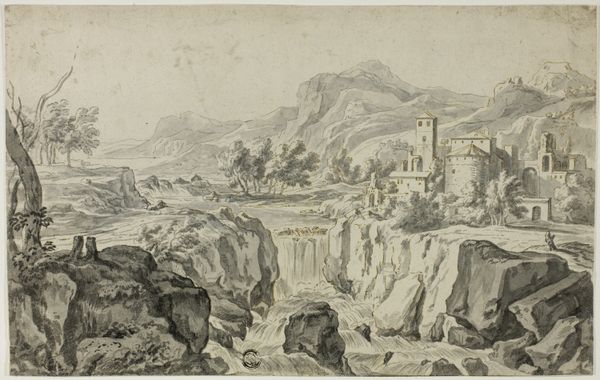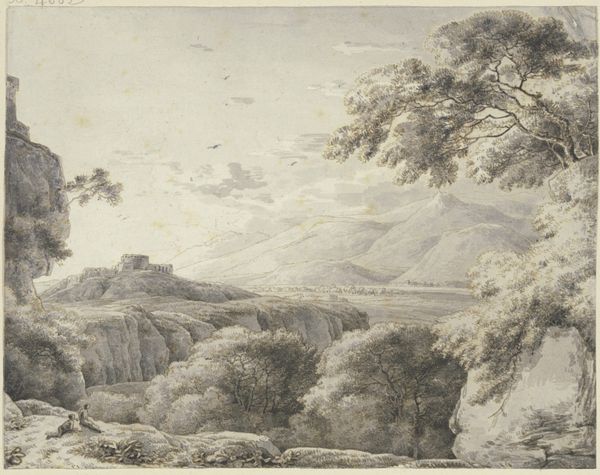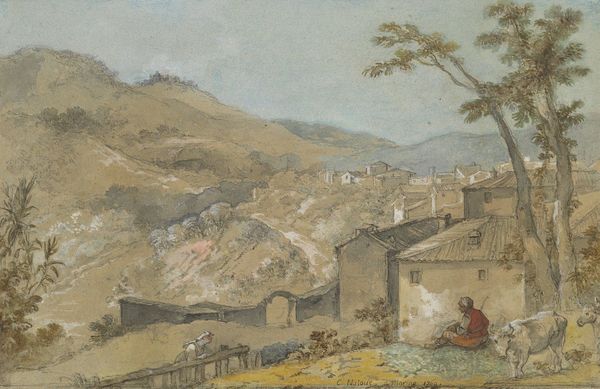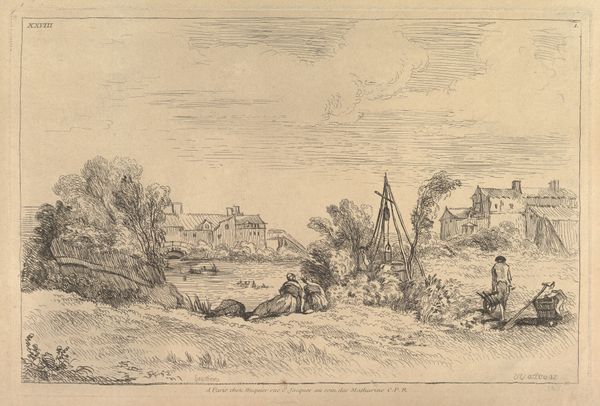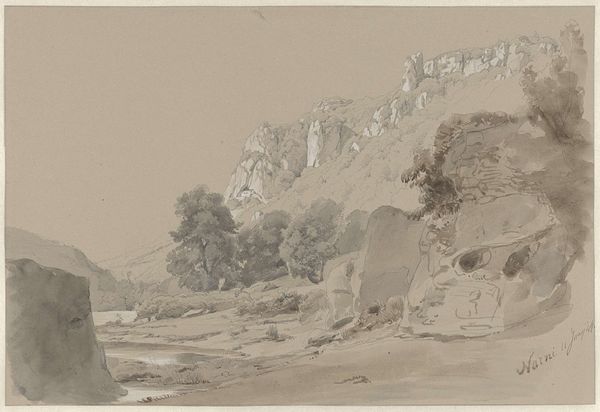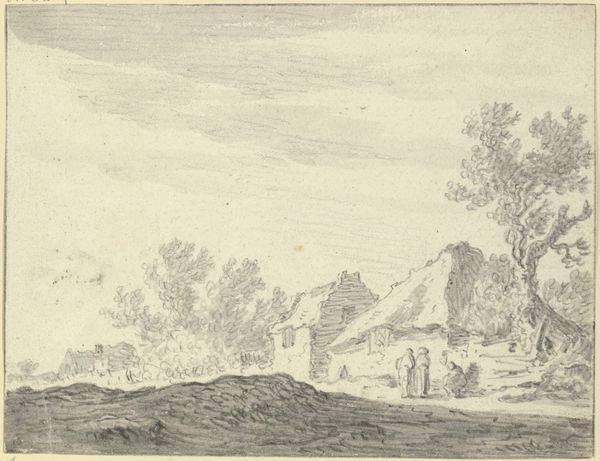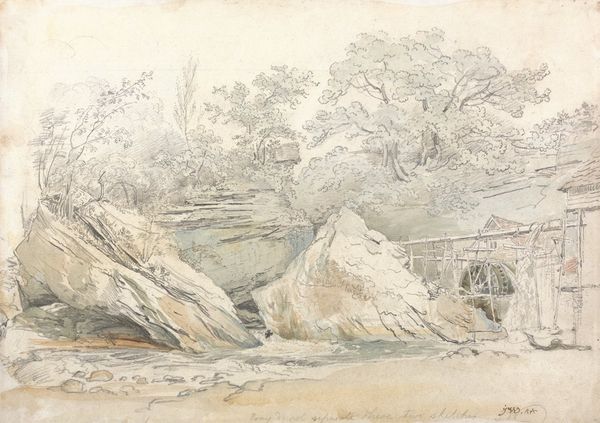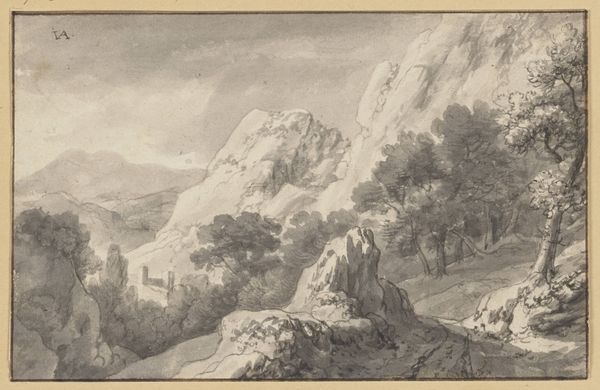
Copyright: Public Domain: Artvee
Curator: Elihu Vedder created this work, entitled "Orte", around 1887. It appears to be rendered in both watercolor and charcoal, and it immediately strikes me as somber and perhaps even a bit lonely. What’s your initial impression? Editor: Stark, yet inviting. The composition really guides my eye. I’m curious about the material processes that led to such a stark representation of the Italian landscape. I'm particularly intrigued by how Vedder integrated both watercolor and charcoal - each demands very different approaches. Curator: Well, the image reads like a series of thresholds. Those large rocks in the foreground frame an entryway that then guides us towards distant architecture along what must be the Roman aqueducts... the repeated arches carry all kinds of symbolic baggage - empire, civic duty. Editor: Yes, and the sheer scale! Consider the physical act of rendering this immense structure with humble materials like charcoal and watercolor. There's something about the deliberate, perhaps even repetitive act, of creating all these arches. This feels significant from a labor perspective. Curator: Precisely! It echoes the human effort inherent in building and maintaining something as grand as an aqueduct, the artist translating something architectural into art, echoing the symbolic nature of its presence on the horizon... almost ruins, remnants. I keep returning to those prominent rocks, so devoid of color compared to the building on the horizon. Editor: And the interplay between the loose washes of the watercolor in the background, setting up depth in the pictorial space. Curator: It definitely contributes to the melancholic air of faded grandeur and evokes the idea of memory, history... almost ghosts. What I see is romanticism with a sharp undertow. Editor: I find that interesting. While the material and methods feel grounded and rooted, and there is something quite romantic and hopeful here in the artistic exploration. Seeing the methods of creation at play grants a certain appreciation for human endeavors. Curator: In thinking about these enduring structures that span across generations, perhaps even mirroring those ancient laborers with contemporary audiences and modern materials of the present day? Food for thought indeed. Editor: Absolutely. It seems like a conversation between epochs rendered through materiality and method.
Comments
No comments
Be the first to comment and join the conversation on the ultimate creative platform.
